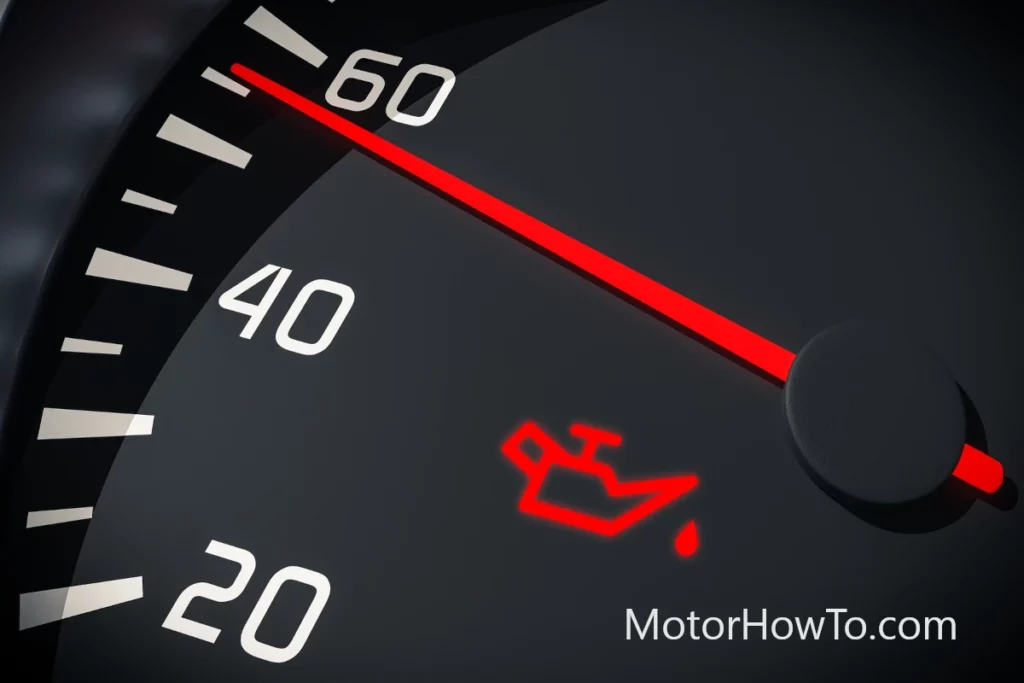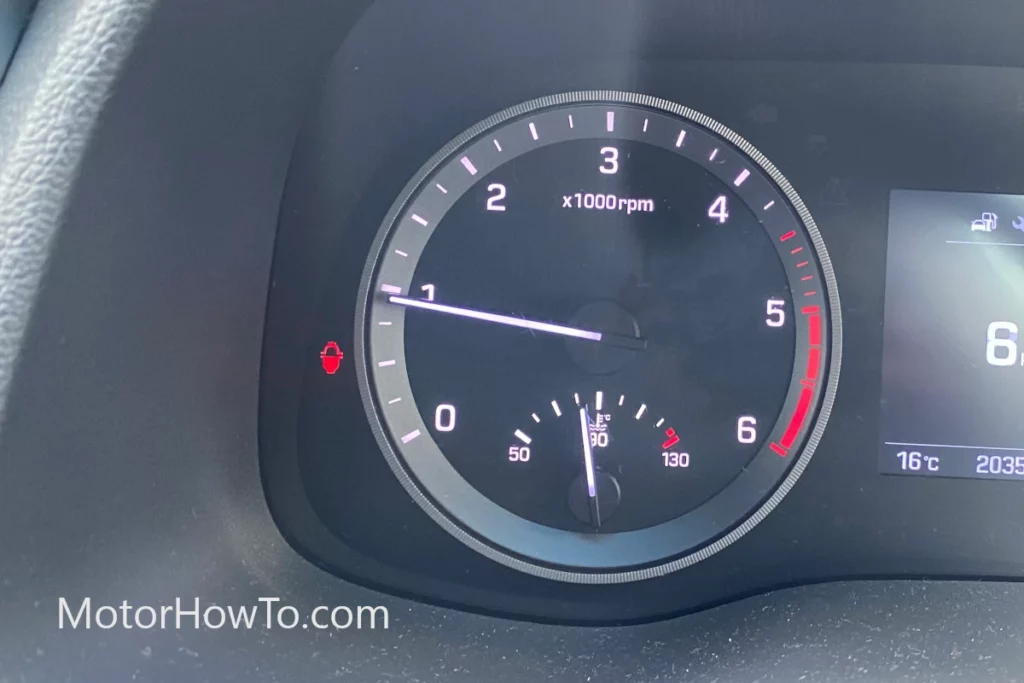As the hum of the engine fills your ears and the open road stretches before you, a certain freedom comes from being behind the wheel of your Chevy Silverado Truck.
But when an unexpected, blinking red light suddenly adorns your dashboard, your tranquil drive becomes an unwelcome mystery.
Suddenly, your faithful pickup seems like a complex puzzle, with each piece holding a different clue to unraveling the cause of that pesky flashing signal.
A blinking red light on your Chevy Silverado’s dash typically indicates an urgent issue like engine overheating or low oil pressure. Check the coolant level, oil level, and engine temperature. If everything seems fine, it might be a sensor issue. Please consult a professional mechanic immediately.
- Understanding Dashboard Warning Lights
- Common Causes for the Blinking Red Light
- Immediate Actions to Take when the Red Light Flashes
- Examining Oil and Coolant Levels
- Checking Engine Temperature
- Sensor Issues and Faulty Indications
- Long-Term Consequences of Ignoring the Blinking Red Light
- Resolving the Issue: Steps to Clear the Blinking Red Light
- Final Thoughts
- Sources

This unexpected interruption can turn even the most seasoned driver into a worried investigator, trying to decode the language of their vehicle’s alert systems.
Understanding what your vehicle is attempting to communicate is the first step toward preserving the longevity and reliability of your Chevy Silverado.
Related:
Understanding Dashboard Warning Lights

Dashboard warning lights are vital for communication between you and your vehicle’s advanced electronic systems.
With a wide array of symbols and colors, each unique light or icon is specifically designed to alert you about different aspects of your vehicle’s status or potential issues.
From engine problems to low tire pressure, the dashboard is your Chevy Silverado’s way of informing you about its health, often before minor issues can evolve into major problems.
Blinking lights, in particular, are designed to capture your attention urgently. The color of the warning or alert light also plays a significant role in the grading of warning signals.
While a yellow or amber light typically calls for attention at the earliest convenience, a red light, especially a blinking one, demands immediate attention. It generally indicates a serious issue or malfunction that may cause damage to the vehicle or compromise safety if not addressed promptly.
Common Causes for the Blinking Red Light
Various factors can trigger a blinking red light on the dashboard of your Chevy Silverado.
One of the most common culprits is a significant drop in oil pressure. Your vehicle relies heavily on oil to lubricate its various components, and a lack of it could lead to severe engine damage.
Another common reason for the flashing red light is engine overheating. This could occur due to a lack of coolant, a malfunctioning thermostat, or a blocked radiator, among other reasons.
The red light might also indicate a problem with your vehicle’s brake system, such as low brake fluid or an issue with the anti-lock braking system (ABS).
Battery problems can also result in a blinking red light, whether due to a dying battery, corroded connections, or a failing alternator.
Lastly, a problem with your vehicle’s airbag system, such as a defective sensor or a problem with the airbag itself, could cause the red light to blink.
Each of these issues necessitates immediate attention to prevent further damage to the vehicle or potential safety risks.
Immediate Actions to Take when the Red Light Flashes
When you notice a blinking red light on your Chevy Silverado’s dashboard, reacting quickly and appropriately is crucial.
The first step should always be to safely pull over as soon as possible and safely do so. Driving with a flashing red warning light could lead to significant damage or even a breakdown.
Once you’ve pulled over, try to identify the specific symbol associated with the red light if one is present.
Consult your vehicle’s manual for this, as it will explain the various warning lights. If the light is related to engine temperature or oil pressure, it’s critical to immediately turn off the engine to prevent further damage.
In cases where the symbol isn’t clear, or the light persists without an identifiable cause, it’s best to call for professional assistance.
A tow to a nearby mechanic or dealership is safer than driving there.
The blinking red light is your vehicle’s way of telling you something is seriously wrong, so it’s important to heed this warning for the safety and longevity of your Silverado.
Examining Oil and Coolant Levels
Maintaining appropriate oil and coolant levels is key to your Chevy Silverado’s smooth operation. If you notice a blinking red light on your dashboard, checking these levels should be one of your immediate responses.
Engine Oil Levels
To check the oil level, ensure your vehicle is on a level surface and turned off for at least a few minutes to let the oil settle.
Open the hood and locate the oil dipstick. Pull it out, wipe it clean, reinsert it, then pull it out again to check the oil level. The oil should be between the two marks on the dipstick. If it’s lower, you’ll need to add more oil immediately.
Modern trucks don’t have a dipstick anymore and oil levels and related information will be displayed on the dashboard instead.
Coolant Levels
The process for checking the coolant level is slightly different.
First, never open the radiator cap when the engine is hot, as it could cause scalding coolant to spray out. Instead, check the transparent coolant reservoir on one side of the engine bay.
The coolant level should be between the “min” and “max” lines. If it’s low, you need to add the appropriate type of coolant, which you can find specified in your vehicle’s manual.
Remember, these checks are not just for when a warning light flashes. Regularly examining your vehicle’s oil and coolant levels can prevent many problems from happening in the first place.
Checking Engine Temperature
Monitoring your Chevy Silverado’s engine temperature is crucial in preventing overheating and the severe damage that can follow. If your vehicle’s red warning light blinks, it could signal that your engine temperature is too high.
Your dashboard has a gauge specifically for this purpose, typically labeled with a symbol resembling a thermometer. A normal engine temperature is usually at or slightly below the midpoint on the gauge. If the needle is pointing towards the “hot” end, it indicates an overheating condition.
If your vehicle is running hotter than usual but hasn’t yet reached the danger zone, you can take immediate measures to lower the engine temperature. You can turn on the heater and fan to full capacity.
Although uncomfortable, this action can help draw heat away from the engine. Also, avoid heavy acceleration and drive at a moderate, steady speed.
However, if the engine temperature is already in the red zone, the safest action is to pull over as soon as it is safe and shut off the engine to prevent further heat buildup. It’s best to then seek professional help, as continued driving in these conditions can cause severe engine damage.
Sensor Issues and Faulty Indications
In some instances, the persistent blinking red light on your Chevy Silverado’s dashboard may not signal an immediate mechanical issue but rather a problem with the vehicle’s sensor system.
Faulty sensors or a malfunctioning dashboard module can trigger false alerts, creating confusion and worry for the driver.
One such example is the oil pressure sensor, which monitors the oil pressure in your engine. If this sensor fails, it might incorrectly indicate a low oil pressure scenario, triggering the red light. Similar issues can arise with coolant sensors, brake system sensors, and others.
Another potential issue could be a fault in the vehicle’s onboard diagnostics system (OBD), which controls the dashboard lights. If this system has a problem, it might incorrectly display a blinking red light even when there’s no mechanical problem.
You’ll likely need professional help to diagnose and fix the problem in these scenarios. Specialized diagnostic tools are used to read the fault codes stored in the vehicle’s computer, pointing the mechanic toward the source of the problem.
Remember, even if the issue turns out to be a faulty sensor, it should still be addressed promptly. An unresponsive or inaccurate sensor can prevent you from receiving important future alerts about your vehicle’s health.
Long-Term Consequences of Ignoring the Blinking Red Light
Ignoring a blinking red light on your Chevy Silverado’s dashboard can have long-term implications. This light is a cry for immediate attention, and failing to respond can result in significant damage to your vehicle, hefty repair bills, and potentially jeopardize your safety.
Ignoring the light signaling issues like low oil pressure or engine overheating could lead to complete engine failure.
Low oil pressure could result in inadequate lubrication of engine components, causing excessive wear and tear, while overheating could result in a warped cylinder head or damaged engine seals. Both scenarios could necessitate a full engine replacement, which is costly.
Ignoring warnings about your brake system could also have dire consequences, including decreased braking efficiency or total brake failure, which could lead to dangerous driving situations.
Disregarding alerts about your vehicle’s battery could leave you stranded, as the vehicle might fail to start or break down.
Furthermore, continuous neglect of these warnings can significantly decrease your vehicle’s lifespan.
The blinking red light is your vehicle’s primary way of communicating a problem that needs immediate attention.
Heeding these warnings maintains your vehicle’s health and can ensure your safety on the road.
Resolving the Issue: Steps to Clear the Blinking Red Light
Once you’ve identified the cause behind the blinking red light on your Chevy Silverado’s dashboard, resolving the issue is the next step.
Depending on the complexity of the problem, some issues might be fixable on your own, while others will require professional help.
If the issue concerns low oil or coolant levels, replenishing these fluids according to your vehicle’s specifications can help resolve the issue.
Once you’ve cooled down the engine, identifying and fixing the cause of overheating – a radiator leak, blocked coolant hoses, or a malfunctioning thermostat – can turn off the red light.
For brake system warnings, it might be as simple as adding more brake fluid. However, if the issue lies with the brake pads, discs, or ABS, you’ll need a mechanic’s assistance.
Similarly, battery issues could range from a quick replacement to more complex problems like a faulty alternator, which would need professional attention.
When sensor issues or faults in the onboard diagnostic system are to blame, a visit to a mechanic is essential. They can perform a detailed diagnosis using specialized tools and equipment, pinpoint the problem, and undertake necessary repairs or replacements.
Remember, even if you’ve managed to clear the blinking red light, it’s crucial to address the root cause of the issue to prevent it from recurring.
Regular maintenance checks, following your vehicle’s service schedule, and promptly addressing any dashboard warnings are the best ways to ensure your Chevy Silverado’s longevity and reliability.
Final Thoughts
In conclusion, when the unexpected blinking red light appears on your Chevy Silverado’s dashboard, it signals an urgent issue that demands immediate attention.
Whether it’s low oil pressure, engine overheating, brake system problems, battery issues, or faulty sensors, the red light is your vehicle’s way of communicating a potential threat to its health and your safety.
Reacting promptly by pulling over, identifying the problem, and taking appropriate action is crucial. Ignoring this warning can lead to severe damage, costly repairs, and jeopardize your overall driving experience.
Remember, understanding and heeding your vehicle’s alerts is the key to preserving the longevity and reliability of your Chevy Silverado.



